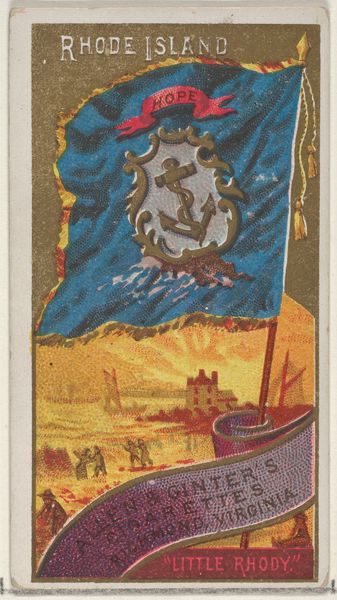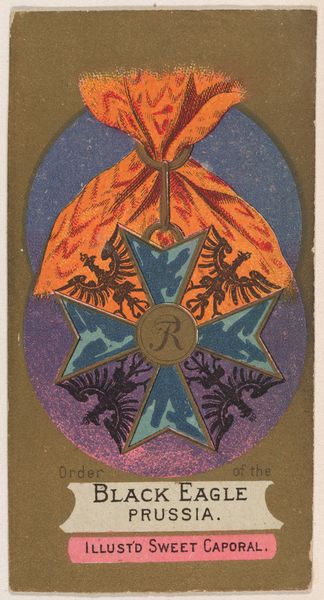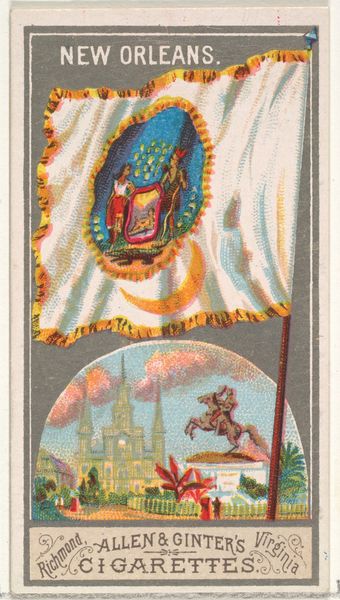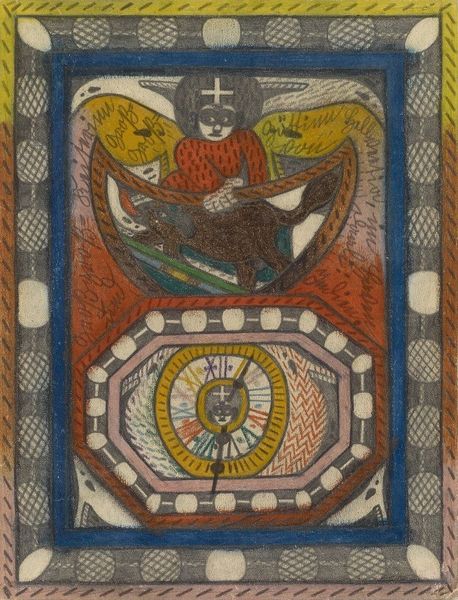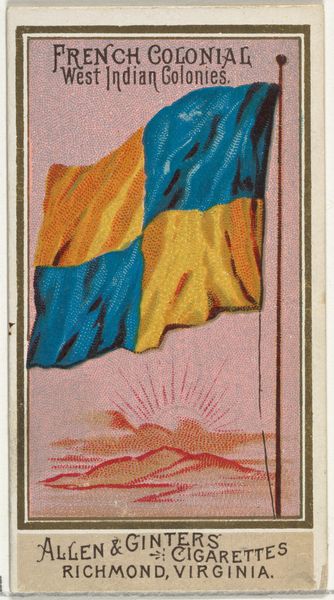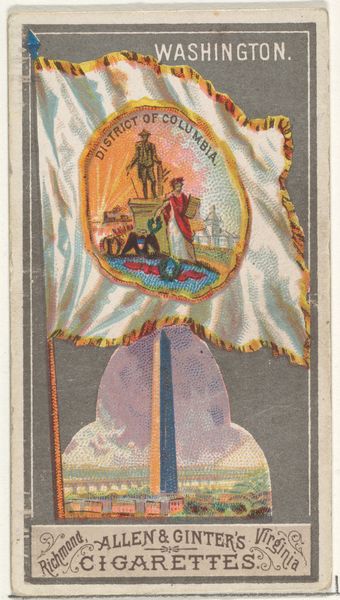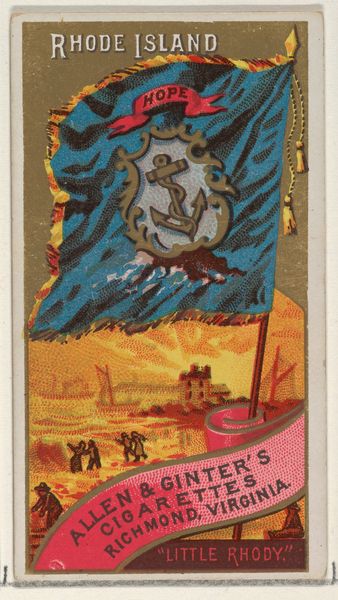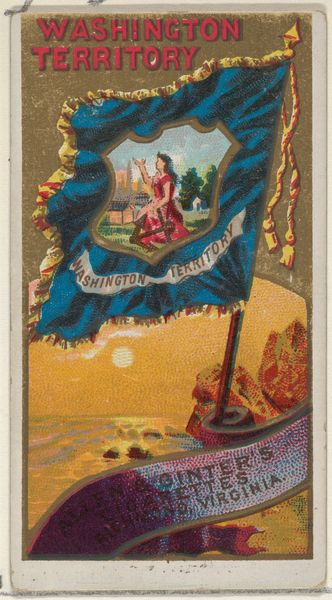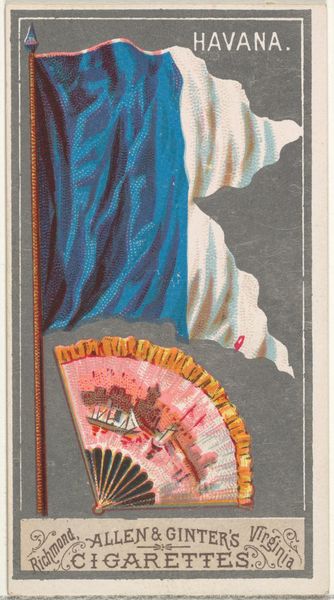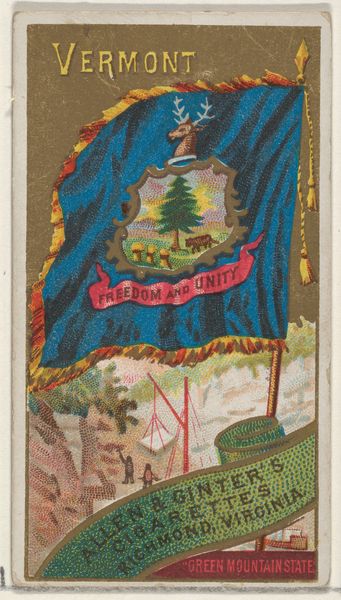
Finland, from Flags of All Nations, Series 2 (N10) for Allen & Ginter Cigarettes Brands 1890
0:00
0:00
drawing, coloured-pencil, print
#
drawing
#
coloured-pencil
#
water colours
# print
#
coloured pencil
#
naïve-art
#
naive art
Dimensions: Sheet: 2 3/4 x 1 1/2 in. (7 x 3.8 cm)
Copyright: Public Domain
Editor: This artwork, titled "Finland, from Flags of All Nations," dates back to 1890 and was created for Allen & Ginter Cigarettes. It seems to be a color print depicting the Finnish flag along with a wintery scene. I find the combination of the official emblem and the dogsled rather unusual, almost like a clash of symbols. What do you see in this piece? Curator: It’s crucial to recognize the context of these “Flags of All Nations” cards. Produced by a cigarette company, their primary purpose was not artistic expression but marketing. Consider how the exoticism of foreign cultures was being commodified. This image simplifies Finland, associating it with both its flag, presented almost as a heraldic banner, and the romanticized, somewhat stereotypical image of a dog sled. It’s about branding, aligning the act of smoking with adventure and global awareness. Editor: So it's less about Finland itself and more about appealing to consumers? How do you interpret the flag design on top of a generic winter scene? Curator: Exactly. Think about how national identity was being packaged and sold in the late 19th century. The flag is almost like a backdrop, and the dogsled emphasizes a perception of Finland as a cold, remote, and perhaps even 'primitive' land. The depiction lacks nuance. It’s designed to evoke a feeling, not necessarily to inform or represent Finland authentically. Do you think this commercial use trivializes national symbolism? Editor: That's a fascinating point. It definitely makes me question how marketing and consumer culture shape our perceptions of different countries. It almost feels exploitative. Curator: Precisely! These images reflect a certain colonial gaze, domesticating foreign lands for the consumption of a Western audience. Seeing how the ‘exotic’ is commercialized sheds a light on the political dynamics of the period. Editor: I never would have considered that this little cigarette card had such a layered history embedded in it. Thanks for illuminating that. Curator: And for highlighting that even the smallest image carries echoes of broader social and historical trends. It prompts us to see consumerism as an active force that informs, and at times distorts, public perceptions.
Comments
No comments
Be the first to comment and join the conversation on the ultimate creative platform.
